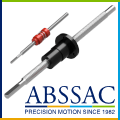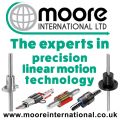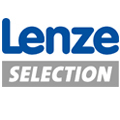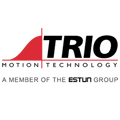
Posted to News on 15th Jan 2024, 16:00
Achieving ATEX approval for pharmaceutical manufacture fluid control automation
Damien Moran, pharmaceutical industry specialist at Brkert Fluid Control Systems, explains the challenges of creating new production lines or expanding existing ones in pharmaceutical plants.
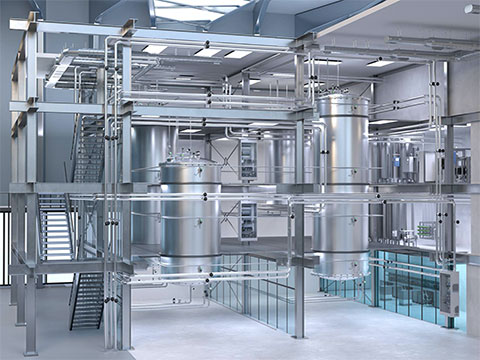
Pharmaceutical plants and those creating active pharmaceutical ingredients (APIs) face many challenges in delivering end products to the highest standards. With a variety of solvents and other combustible ingredients used for manufacturing, many production areas are classified under ATEX/Ex regulations, which stipulate rigorous build specifications for all equipment installed in zoned areas.
Creating or expanding a production process within a pharmaceutical environment offers a number of challenges. From the creation of an automation concept and developing it into a physical model to sourcing all the components, connecting them together and integrating the new process with the wider infrastructure, the whole process requires considerable expertise.
Process automation predominantly uses either a distributed pneumatic control concept or a decentralised one. The former uses control cabinets that are positioned close to the process, usually within the zoned area, and therefore they must also be certified for their location together with all the control valves and sensors.
When there is a more wide-ranging project, such as modifying an existing control system or building a completely new one, the task of delivering a fully certified installation is more complex and requires special skills and expertise. In such situations, it is important to select partners that understand process control design and have the ability to deliver bespoke solutions using the latest technology - all certified to the standards in force locally.
Systems can only realise the expectations of the client if they are conceived, designed and manufactured by a single, dedicated team with the experience to appreciate the fine detail involved. Brkerts Systemhaus concept uses expert teams of designers, project managers and engineers that work together to produce innovative solutions.
Custom cabinets
One of the first decisions is the size of cabinets required for the project, which may be restricted to a few standard sizes from some suppliers. Cabinets can occupy too much space, which can be a very limited resource in pharmaceutical environments.
A custom control cabinet that is destined for Zone 1/21 must be built using ATEX certified components, but the enclosure itself does not automatically receive ATEX approval, it will have to be independently certified after the build has been completed. This can cause delays for installation and commissioning, unless the manufacturer is approved to supply a declaration of conformity.
For the components and pipework inside the cabinet, every item must be correctly specified for the application, with documentation to support it. The control equipment within the cabinet can be quite complicated and include valve islands, intrinsically safe valves, remote I/Os, components for filtration and pressure regulation as well as electrical connections and switches.
At the heart of the control system is the pneumatic island. For installations in zones 2/22, the choice is quite extensive, but to satisfy the demands of Zone 1/21, there are fewer options. However, this does not detract from the features that are available, in fact some of the latest offerings provide excellent integration and connectivity with components commonly used in these applications.
Seamless integration
For Zone 1/12 installations, Brkerts Type 8650 (AirLINE Ex) offers numerous features and benefits, not least the ability to integrate seamlessly with the Siemens ET 200iSP remote I/O system. This enables Brkert valve control to operate within the Siemens software, which is commonly used in the pharmaceutical industry.
One of the unique features of the Type 8650 is the ability to hot swap pneumatic valves without interrupting the manufacturing process. In an industry where any unexpected downtime can cause very significant financial losses, the benefits of comprehensive diagnostics and easy parts exchange can be readily appreciated.
Production plants that are operating the Siemens PCS7 distributed control system can now seamlessly integrate Brkert process control equipment that is tailored to each application. Furthermore, plants that operate in a non-Siemens environment can still take advantage of the Brkert product lineup including the Type 8650 (AirLINE Ex).
Streamlined delivery
Brkert has exceptional experience in designing and building ATEX control cabinets at a dedicated facility that not only designs and constructs customised panels, but also certifies the complete assembly before it is dispatched. This capability ensures a streamlined process for customers that provides tailored solutions within optimized timeframes.
Beyond the actual build of the control panel, in order to meet ATEX certifications, each product must be accompanied by the correct paperwork. Every project delivered by Brkert is accompanied by a comprehensive documentation package that is supported by the companys accreditations.
The Menden Systemhaus maintains a very high level of expertise in delivering control cabinets for installations in potentially explosive atmospheres. From initial concept to on-site commissioning, a dedicated team is assigned to each project to ensure continuity and that understanding of the specific requirements is maintained.
Due to the multiple competencies within each team, it is possible to design compact, integrated solutions that often contain both electrical and pneumatic circuits and even fluidic connections as well. In this way, it is possible to deliver a single control cabinet, minimising space requirements as well as all the equipment that will control the process itself, which reduces commissioning time and improves final delivery.
Fluid Control Centre
1 Bridge End
GL7 1QY
UNITED KINGDOM
+44 (0)1285 648720


